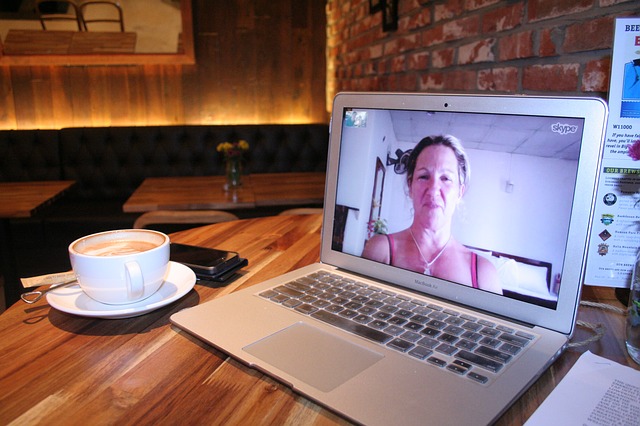
“Blended psychotherapy” is a term used to describe the integration of talking therapies with digital content, normally accessed outside of a face to face therapy session, and intended to provide therapeutic benefit. Examples might include online educational modules, or apps that monitor mood or sleep; potentially supporting reflective discussions with a therapist.
Blended psychotherapy hasn’t been integrated into mental health services on a large scale, and researchers are still exploring models for how to best integrate digital content with face to face therapy, as well as collecting evidence for efficacy. More generally, identifying barriers and facilitators for digital interventions has become a distinctive strand of work of the last few years, as digital interventions are seen as having unique barriers and facilitators that are likely to impact on uptake.
A recent study published in Internet Interventions (Titzler et al, 2018) looks at a specific “blend” of face to face therapy and digital content, which was put into practice as part of the EU-funded E-COMPARED project. It contributes psychotherapists views on the barriers and facilitators to blended psychotherapy that emerged during usage.
Whilst some of these are specific to the blend, we might hope that some will be more generalisable, and provide some useful learning that might translate to other blends. These also tell us something about the implications for professional psychotherapy practice of introducing blended psychotherapies.

Blended therapies combine face to face sessions with internet- and mobile-based interventions into a new treatment format.
Methods
During the segment of the E-COMPARED project reported on in this paper, seventy one clients engaged with a specific blended therapy, designed by the research project. This was provided through the German healthcare system, and consisted of six face to face therapy sessions, and six modules on an online platform. Therapists and clients worked together to decide the order of modules, and therapists were provided with an online “portal”. This allowed them to monitor progress, provide feedback on online modules, and send prompting messages to clients.
Five of the eight therapists were then interviewed at the end of this study, and the paper draws on these interviews to identify barriers and facilitators for successful therapy, reported from the perspective of the psychotherapists. On average, each of these therapists had treated 16 clients as part of the study, and hence these interviews draw on real lived experience of using a blended therapy to support a client. This is a real strength of the paper.
Results
What appears to be a rigorous analysis of the collected interview material is used to identify 29 barriers and 33 facilitators. Barriers are discussed first, and then facilitators. Both are split across four categories, as follows:
- Implementation in the health care system
- Therapeutic factors
- Therapist factors
- Patient factors
Barriers identified by psychotherapists
Sadly, as is all too common in healthcare technology research, the section on barriers begins by identifying immature technologies and other technical problems as barriers. Though I’m convinced that these were barriers, these teach us very little that is useful in relation to future healthcare practice around blended psychotherapy, as we would hope that immature technologies would not make it out into large scale health services usage.
The paper does report on some interesting and potentially more generalisable barriers. These include:
- Online content being relatively generic, with limited options for tailoring its presentation to the need of clients, and this being perceived as a barrier to effective progress, in comparison to more tailored content
- The ratio between face to face and online work being fixed, when psychotherapists would have liked more control over this, and would have expected more success with greater control
- The significant amount of therapist time spent on reminding clients to engage with online modules (which calls into question any belief that blended therapies might be less resource intensive to deliver)
- Some patients conceptualising technologies as a temporary intervention, intended to bridge time between face to face sessions.
Psychotherapists are likely to be highly adept at tailoring their face to face interactions to their clients, and hence these findings talk to a significant gap between a highly-tailored and personal face to face experience, and what psychotherapists perceived to be an excessively general online experience.
It is important to note that a perceived need to tailor technologies to individuals has been recognised within healthcare technology research, and papers often conclude for calls for better tailoring of technologies. How to do this has been a focus of much of my own work (e.g. see Rennick-Egglestone, 2014).
However, how to tailor technologies in a cost-effective manner is challenging, and whether it is truly possible to tailor healthcare technologies to their users is still an open and unsolved question. Tailored technologies certainly haven’t made it out into widescale practice as of yet.
Facilitators identified by psychotherapists
The paper identifies a range of facilitators, many of which tell us about successful occasions of integrating digital content into therapeutic practice. Interestingly, therapists felt that their existing skills and knowledge enabled them to be effective blended therapists, which is a useful finding, as whether therapists can adjust to new models of delivery is an open question around digital intervention implementation work. A call for more intensive training is issued in the paper, suggesting that some development of skills and knowledge is required.
Online elements of the blend appear to have helped clients to prepare effectively for sessions, which was perceived positively by psychotherapists. Clients also appear to have engaged successfully with mood-charting functionality provided through an app, and therapists appeared to suggest that digital mood charting was significantly more successful than their own prior efforts to encourage clients to track moods using non-digital methods.

Psychotherapists called for tailored online content and more flexibility over the ratio between face to face and online work.
Conclusions
Following a detailed discussion of barriers and facilitators, the paper concludes with a set of recommendations for integrating blended therapies into the German healthcare system. These essentially amount to giving psychotherapists greater control over delivery of a more personalised and tailored blended psychotherapy treatment.
Strengths and limitations
As noted above, analysis work appears rigorous, and has been conducted with psychotherapists who used blended therapy in practice, raising the value of the barriers and facilitators identified.
The conclusions of the paper amount to an argument for giving psychotherapists more control over the delivery of blended therapy. However, it could be argued that professionals will always believe that giving them more control will improve outcomes, when in fact this is just a hypothesis that needs to be tested.
Implications for practice
Practitioners interested in trying out blended psychotherapy might note that the amount of time required to encourage clients to engage with technologies was raised as a barrier by therapists. We might hope that better technologies might solve this problem for us, but this remains to be tested.

The amount of time required to encourage clients to engage with technologies was raised as a barrier by therapists.
Conflicts of interest
None known.
Links
Primary paper
Titzler I, Saruhanjan K, Berking M, Riper H, Ebert DD. (2018) Barriers and facilitators for the implementation of blended psychotherapy for depression: A qualitative pilot study of therapists’ perspective. Internet Inventions https://doi.org/10.1016/j.invent.2018.01.002
Other references
Rennick-Egglestone, S. (2014) Tailoring technologies to the rehabilitational needs of stroke survivors. 2014. PhD thesis, University of Nottingham. http://eprints.nottingham.ac.uk/14153/
Photo credits
Photo by Rob Hampson on Unsplash
Photo by Alejandro Escamilla on Unsplash

This is why we also employ a neutral facilitator, who is a communication specialists and keeps an eye on the emotional pulse of discussions. The facilitator is a licensed psychologist, counselor, therapist, or social worker, although he or she is not conducting therapy. Rather, the facilitator helps keep conversations productive and prevents them from going off the rails. Moreover, the facilitator focuses discussions on the future, such as the health and success of your small business, rather than on the arguments that brought you to divorce.